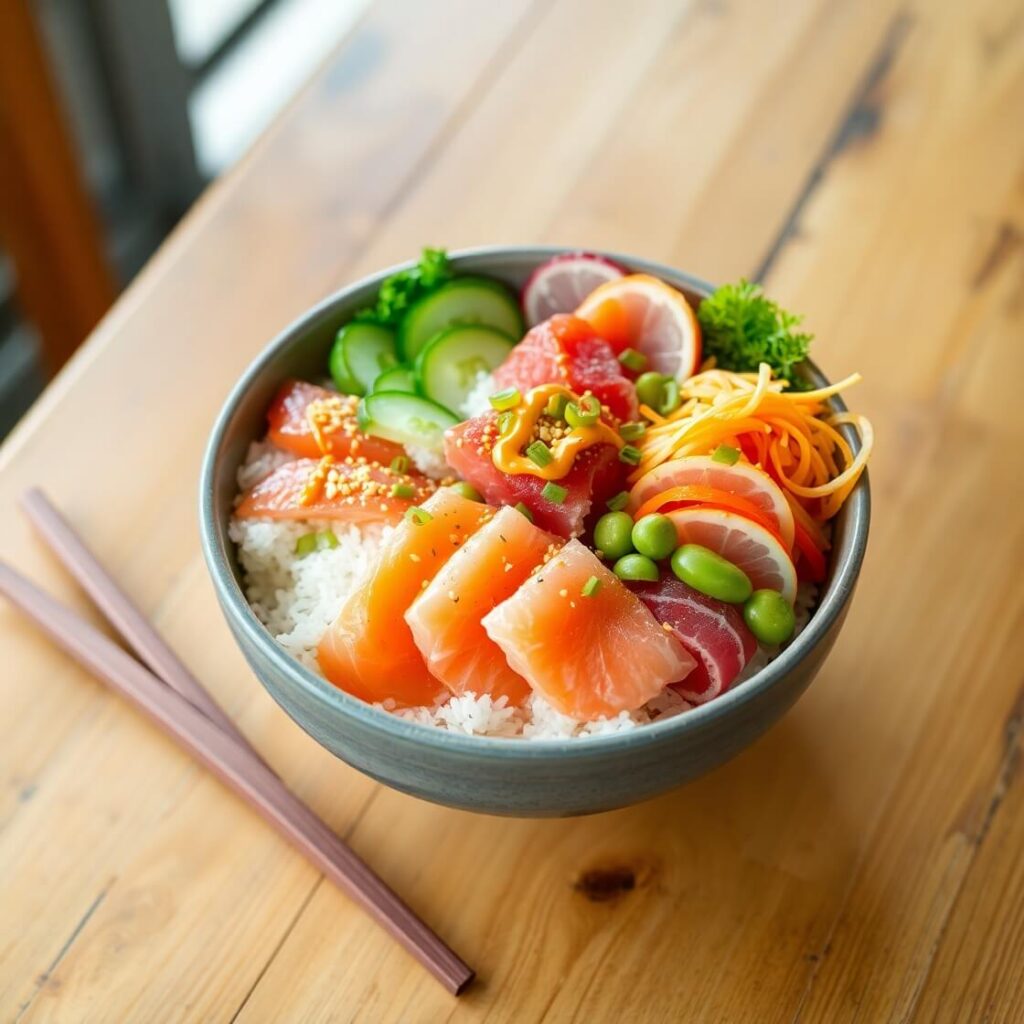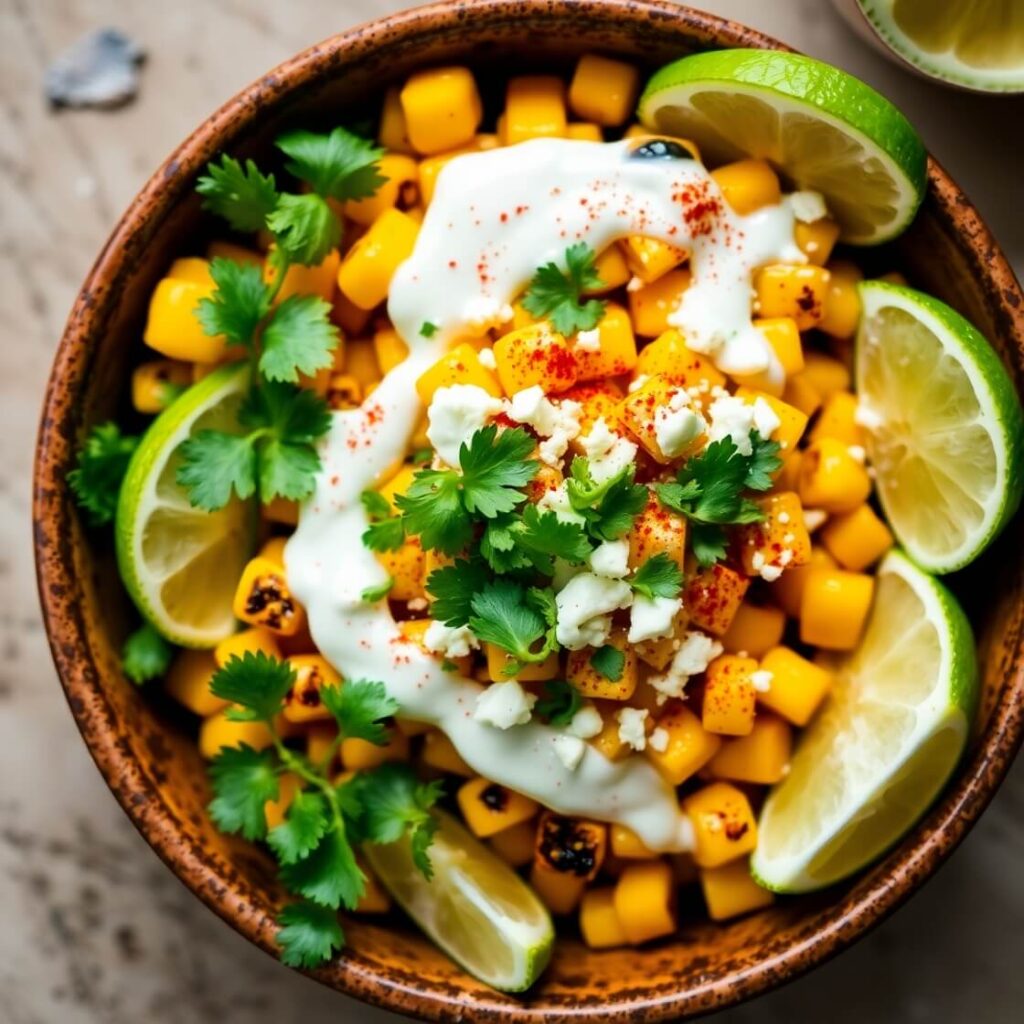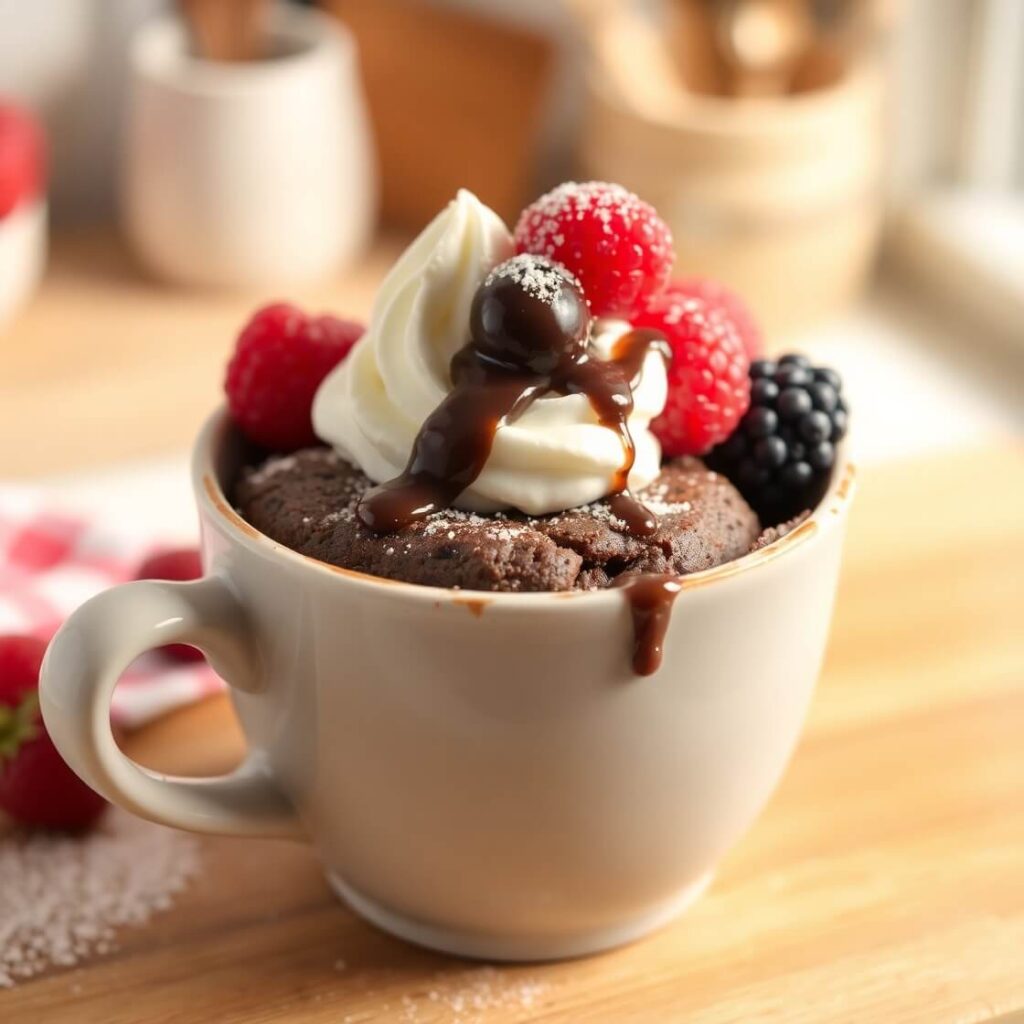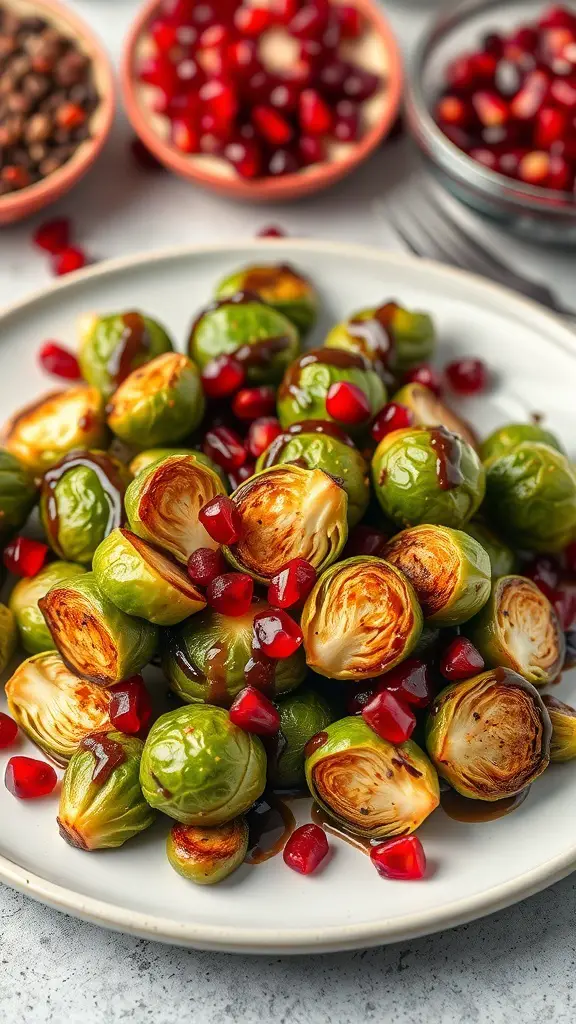Sushi Bowl Recipe
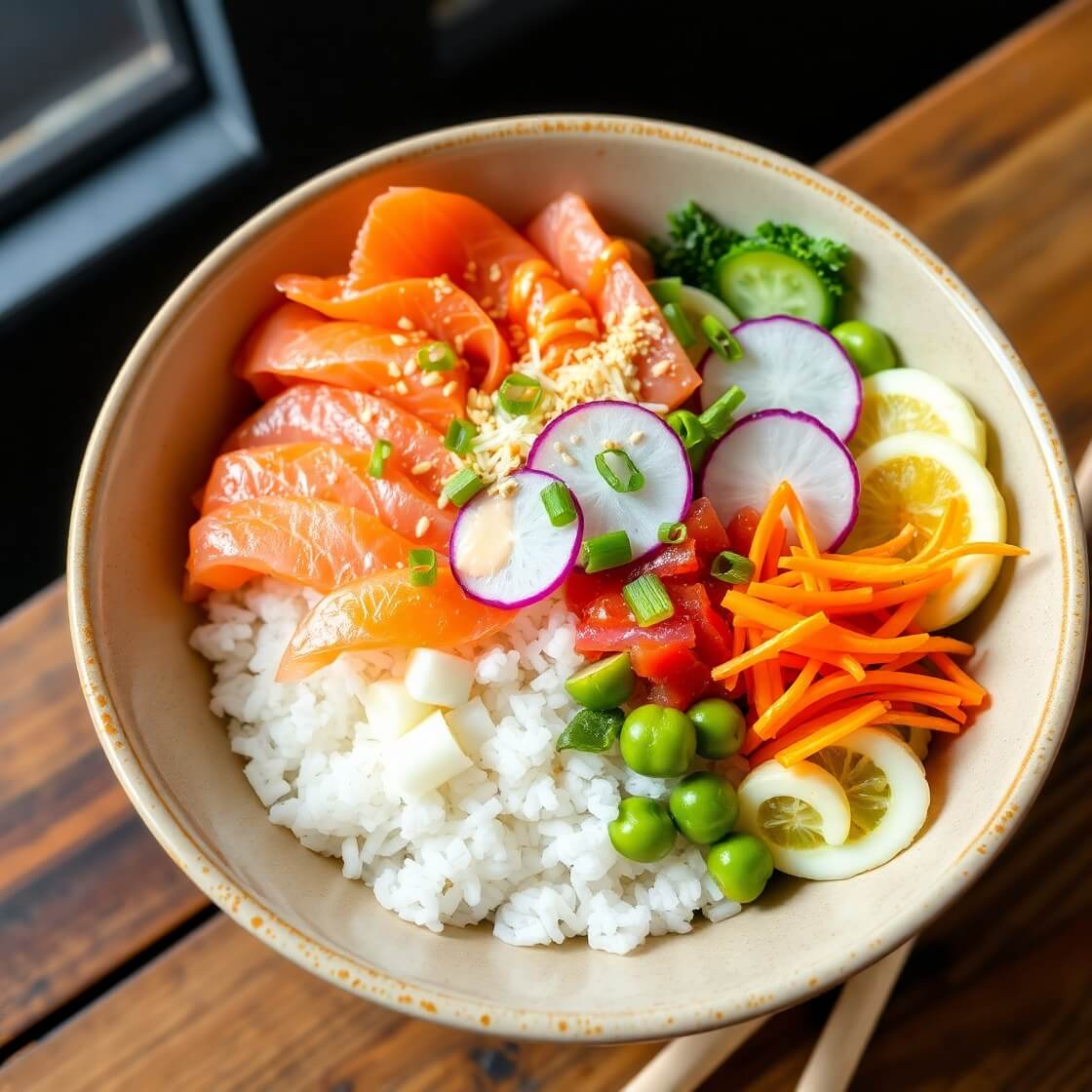
When I first made a sushi bowl, I was looking for a way to enjoy all the flavors of sushi without the fuss of rolling. I love sushi, but let’s be honest—it can be time-consuming, delicate, and sometimes intimidating to prepare at home. That’s when the sushi bowl became a game-changer. It’s everything I love about sushi—the fresh fish, the crunchy vegetables, the seasoned rice, and the creamy sauces—all layered together in a single bowl.
The beauty of this recipe is that it takes the artistry of sushi and makes it approachable for everyday cooking. Instead of worrying about rolling and slicing, you get to focus on the flavors, the textures, and the fun of mixing and matching toppings. Whether you’re a sushi lover who doesn’t want the hassle of rolling or someone who’s brand-new to making sushi at home, this bowl is a perfect entry point.
I made this recipe because I wanted a fresh, healthy meal that still felt indulgent. Every bite feels satisfying, with the perfect balance of sweet, salty, tangy, and umami. It’s like a sushi restaurant came to your kitchen table—without the high bill at the end.
Why I Love This Recipe
The reason I adore this sushi bowl is simple—it’s versatile, beautiful, and incredibly satisfying. Traditional sushi takes skill and practice, but this recipe removes the intimidation factor while still delivering the same mouthwatering flavors.
What makes it special is the freedom it gives you. You can customize your bowl with your favorite ingredients. Want to go classic with tuna and avocado? Do it. Prefer a vegetarian option with tofu and cucumbers? Delicious. You can even make it kid-friendly by using cooked shrimp, crab sticks, or tempura chicken.
The bowl format also makes it so much more filling than a few sushi rolls. It feels like comfort food but still leans on the healthy side because of the fresh vegetables and lean protein. The rice is seasoned just like traditional sushi rice with rice vinegar, sugar, and a touch of salt, which gives it that authentic sushi flavor foundation. On top of that, you can drizzle spicy mayo, soy sauce, or sesame dressing to bring everything together.
Another reason I love it—it’s a crowd-pleaser. I’ve served this at family dinners where some people don’t even like raw fish, and everyone still found something to enjoy. That flexibility makes it a go-to recipe for weeknight dinners, meal prep, or even fun dinner parties where guests can build their own bowls.
Ingredients for Sushi Bowl
One of the things I appreciate most about a sushi bowl is that the ingredients are simple, fresh, and easy to find. You don’t need a sushi chef’s pantry to pull this together, and you can adapt based on what’s available to you.
Here’s the foundation of what you’ll need:
- Rice: Sushi rice is the traditional choice, but short-grain white rice or even brown rice works if you want a healthier spin. The key is seasoning it with rice vinegar, sugar, and salt to get that authentic sushi base.
- Protein: Fresh raw fish like tuna, salmon, or yellowtail is a classic option. Make sure it’s sushi-grade for safety. Not a fan of raw fish? No problem—use cooked shrimp, crab, tofu, or even rotisserie chicken for an easier take.
- Vegetables: Avocado, cucumber, edamame, shredded carrots, and radishes add both freshness and crunch. You can also get creative with pickled veggies for tanginess.
- Toppings: Nori sheets cut into strips, sesame seeds, green onions, and ginger make the bowl feel like true sushi.
- Sauces: Spicy mayo (sriracha + mayo), eel sauce, soy sauce, or sesame dressing give each bite that restaurant-quality finish.
What I love is how customizable it is. If I’m craving something rich and buttery, I’ll add extra avocado. If I want more protein, I’ll double up on shrimp. And when I want a vegetarian bowl, I load up on tofu, edamame, and crunchy vegetables.
How Much Time Will You Need
Making a sushi bowl is surprisingly quick. From start to finish, it takes around 30 to 40 minutes depending on your prep speed. Cooking and seasoning the rice will be the longest part, taking about 20 minutes. While the rice cooks, you can prep your vegetables and protein, so everything comes together efficiently.
For meal prep, you can even cook the rice and chop the vegetables ahead of time, then assemble the bowl in just 10 minutes when you’re ready to eat.
How to Make This Sushi Bowl
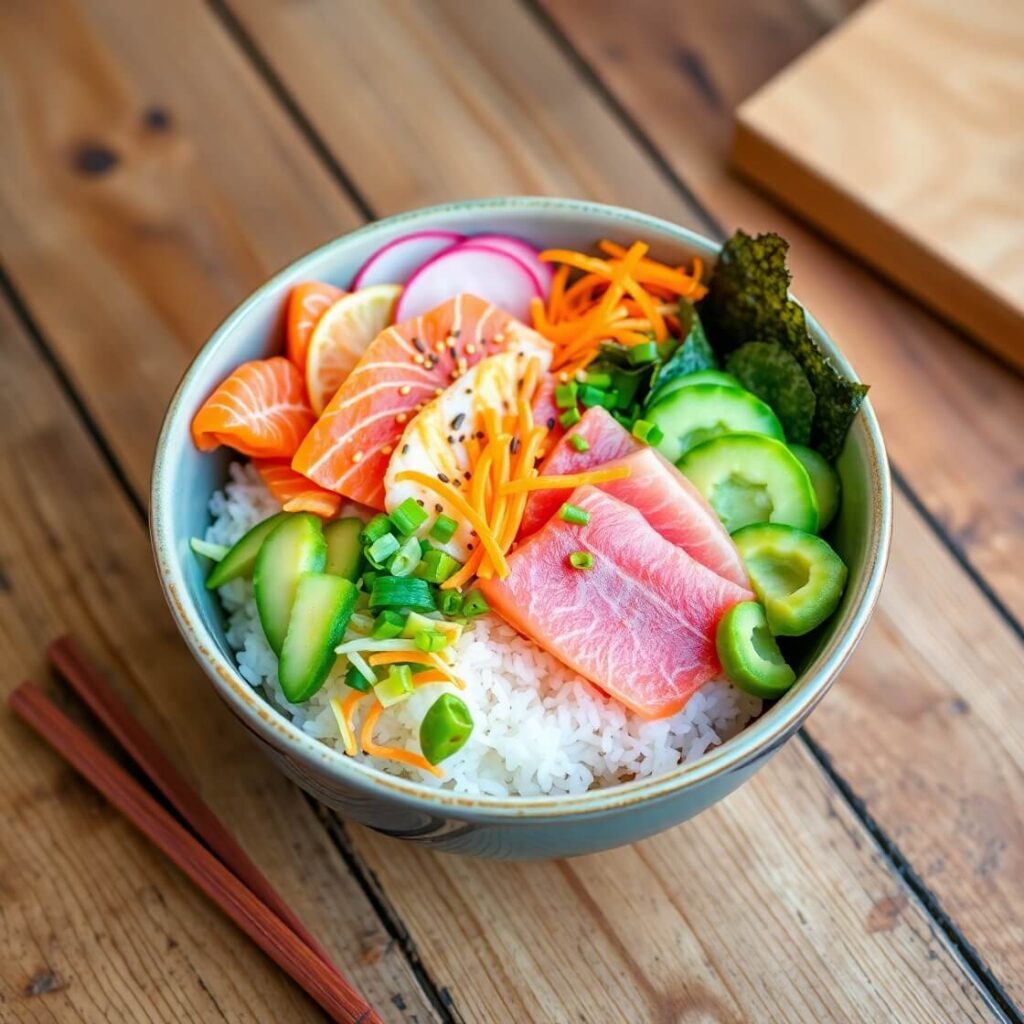
Step – 1: Prepare the Rice
Rinse 1 ½ cups of sushi rice under cold water until the water runs clear. This removes excess starch and prevents gummy rice. Cook the rice according to package instructions—typically in a rice cooker or pot with 2 cups of water.
Step – 2: Season the Rice
Once cooked, transfer the rice to a large bowl. While still warm, gently fold in 3 tablespoons rice vinegar, 1 tablespoon sugar, and 1 teaspoon salt. This seasoning mix is essential for achieving the authentic sushi flavor base. Let it cool slightly before assembling.
Step – 3: Prepare the Protein
If using raw fish, slice your sushi-grade tuna or salmon into thin, bite-sized pieces. For cooked options, peel and devein shrimp or prepare baked tofu by cubing and pan-searing it with soy sauce.
Step – 4: Prep the Vegetables
Slice avocado, cucumbers, and radishes into thin slices. Steam or microwave edamame until tender. Shred carrots or use a julienne peeler for thin strips.
Step – 5: Assemble the Bowl
Spoon the seasoned sushi rice into the bottom of your bowl. Arrange your protein and vegetables neatly on top. Think of it as painting with food—colorful, balanced, and inviting.
Step – 6: Add Toppings
Sprinkle sesame seeds, chopped green onions, and shredded nori over the bowl. Add a small pile of pickled ginger for freshness.
Step – 7: Drizzle with Sauce
Finish by drizzling spicy mayo, soy sauce, or your favorite sushi-inspired sauce across the top.
Step – 8: Serve and Enjoy
Grab your chopsticks and dig in! Mix everything together for a harmonious blend of flavors, or take it one bite at a time to savor each ingredient.
Substitutions
The beauty of this sushi bowl is that it welcomes creativity. If you don’t have access to certain ingredients, there are plenty of substitutions to keep the dish just as delicious.
- Rice: If sushi rice isn’t available, you can use jasmine or short-grain white rice. For a healthier spin, brown rice or quinoa are fantastic alternatives.
- Protein: Not into raw fish? Cooked shrimp, crab sticks, grilled chicken, or crispy tofu work wonderfully. Smoked salmon also makes a great substitute.
- Vegetables: Swap out traditional cucumbers and carrots for bell peppers, zucchini, or even mango for a sweet twist.
- Sauces: If spicy mayo isn’t your thing, try teriyaki sauce, sesame dressing, or a drizzle of ponzu for a lighter flavor.
These swaps not only make the recipe more approachable but also allow you to adapt it to dietary needs or personal preferences.
Best Side Dish of Sushi Bowl
A sushi bowl on its own is filling, but pairing it with a light side makes the meal even more satisfying. Here are three sides I love serving with it:
- Miso Soup – A warm and comforting starter that balances the cool freshness of the sushi bowl.
- Seaweed Salad – Adds a tangy, umami-rich element that complements the bowl perfectly.
- Gyoza (Japanese Dumplings) – A fun, savory side that makes the meal feel like a restaurant experience.
Serving and Presentation Tips
A sushi bowl isn’t just about taste—it’s also about how it looks when you set it on the table. One of the reasons sushi is so beloved is the artistry behind it, and I love bringing a little of that beauty into this recipe.
When serving, I always start with a shallow, wide bowl so the toppings have plenty of space to shine. Spread the sushi rice across the bottom in an even layer, then place your protein and vegetables in small, neat sections rather than piling everything on top of each other. This creates a colorful, Instagram-worthy presentation that makes each bite feel special.
Adding garnishes like thinly sliced green onions, black and white sesame seeds, or strips of toasted nori gives the bowl a polished finish. If I’m hosting, I’ll set out little bowls of sauces—spicy mayo, soy sauce, or ponzu—so everyone can drizzle their favorite on top. Presentation doesn’t have to be complicated, but a thoughtful arrangement goes a long way in making the dish feel restaurant-quality.
Tips and Tricks to Make This Recipe More Better
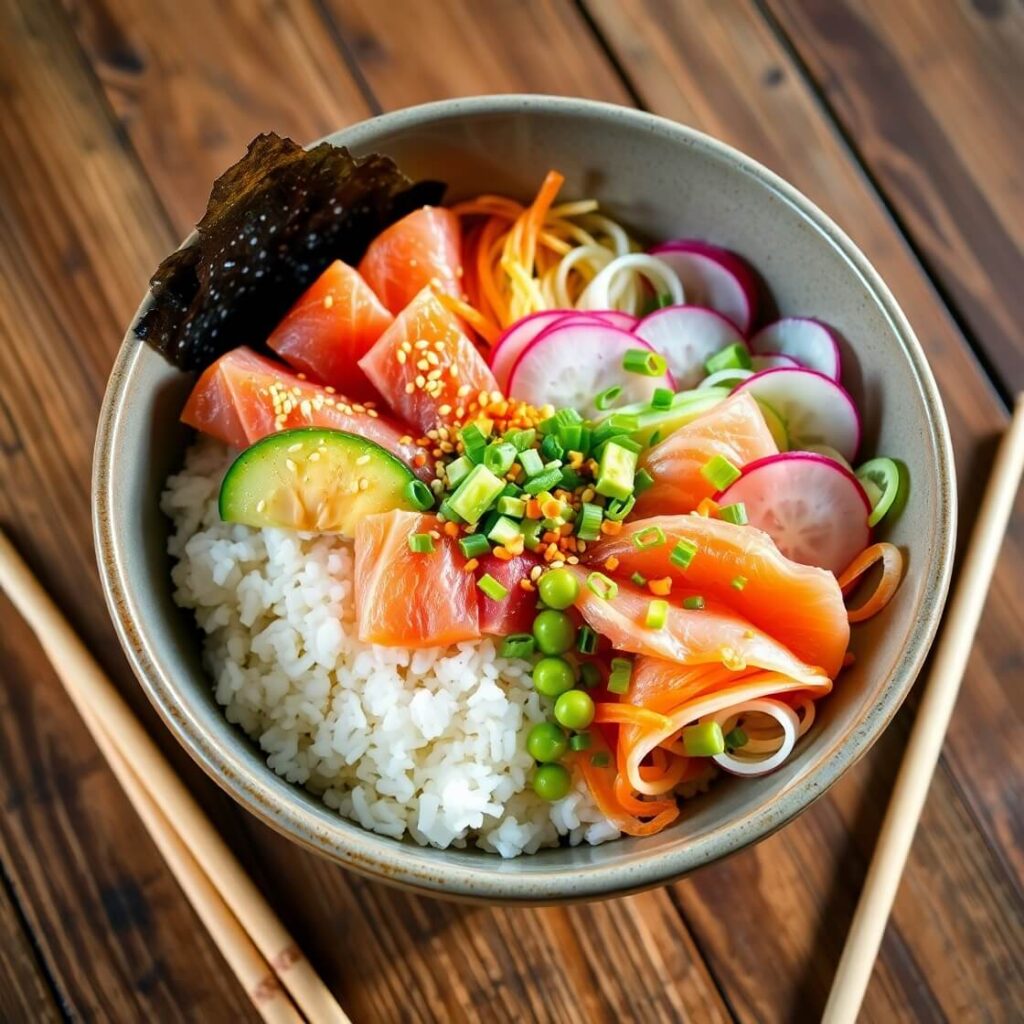
One of the best things about a sushi bowl is how flexible it can be, but there are a few tricks that will really elevate it:
- Perfect the rice – Don’t skip rinsing the rice before cooking. This small step keeps it fluffy and prevents clumping. Seasoning it while warm ensures it soaks up all the flavors.
- Use sushi-grade fish – If you’re going with raw tuna or salmon, always make sure it’s labeled sushi-grade. This guarantees freshness and safety.
- Balance the textures – A great sushi bowl should have soft (avocado, fish), crunchy (cucumber, carrots), and chewy (rice, seaweed) components. This makes every bite exciting.
- Prep ahead – Cook the rice and chop veggies earlier in the day. When it’s mealtime, you’ll only need a few minutes to assemble.
- Don’t be shy with sauces – A drizzle of spicy mayo or eel sauce ties everything together. Think of it as the glue that makes the flavors sing.
Common Mistakes to Avoid
Even though this recipe is easy, there are a few pitfalls to watch out for:
- Overcooking or undercooking the rice – If the rice is too mushy or too hard, the whole bowl feels off. Follow the water-to-rice ratio carefully.
- Using fish that isn’t fresh enough – If you can’t get sushi-grade fish, skip the raw option. It’s not worth the risk. Go with cooked proteins instead.
- Skipping the rice seasoning – Plain rice won’t give you that authentic sushi flavor. The rice vinegar mixture is key.
- Overloading the bowl – It’s tempting to pile on everything, but too many toppings can muddy the flavors. Stick to a balance of 4–5 main ingredients.
- Forgetting garnishes – Sesame seeds, nori, and pickled ginger may seem like small extras, but they really bring the bowl to life.
How to Store It
If you want to make sushi bowls ahead of time or store leftovers, here’s what works best:
- Rice – Store cooked rice separately in an airtight container in the fridge for up to 3 days. Reheat gently in the microwave with a damp paper towel to keep it from drying out.
- Protein – If you’re using raw fish, it’s best to eat it the same day. For cooked shrimp, tofu, or chicken, you can store it for up to 2 days.
- Vegetables – Keep them chopped but separate in containers to stay fresh and crisp. Avocados should be sliced fresh to avoid browning.
- Assembled bowls – I don’t recommend storing a fully assembled bowl for more than a few hours, as the textures get soggy. If you want to meal prep, store components separately and assemble just before eating.
FAQ
Can I make sushi bowls vegetarian or vegan?
Absolutely! Swap the fish for tofu, edamame, or extra vegetables. Use vegan mayo for spicy sauce, and you’ve got a fully plant-based meal.
Do I need a rice cooker to make sushi rice?
No, a simple pot on the stove works fine. Just be sure to keep the lid on and let it rest after cooking for the best texture.
What fish is best for sushi bowls?
Tuna and salmon are the most popular, but yellowtail or even smoked salmon work beautifully. Always buy sushi-grade fish.
Can I use regular vinegar instead of rice vinegar?
Rice vinegar gives the most authentic flavor, but if you’re in a pinch, white wine vinegar with a touch of sugar is a decent substitute.
Are sushi bowls healthy?
Yes, especially when you use lots of vegetables and lean protein. They’re lighter than many rice bowls and can be adapted for lower calories by reducing rice or using brown rice.

Sushi Bowl Recipe
- Total Time: 40 minutes
- Yield: 4 1x
- Diet: Gluten Free
Description
This sushi bowl recipe brings all the freshness and flavor of traditional sushi rolls—without the rolling. With a base of perfectly seasoned rice, topped with fresh vegetables, tender protein, and flavorful sauces, it’s a healthy, vibrant meal that you can whip up any night of the week. The best part? You can customize it to suit your taste—whether you love raw tuna and salmon, prefer cooked shrimp, or want to keep it vegetarian with tofu and extra veggies. Every bite is colorful, satisfying, and bursting with flavor.
Ingredients
- 1 ½ cups sushi rice
- 3 tbsp rice vinegar
- 1 tbsp sugar
- 1 tsp salt
- 8 oz sushi-grade salmon or tuna (or cooked shrimp/tofu)
- 1 avocado, sliced
- 1 cucumber, thinly sliced
- 1 cup edamame, cooked
- 1 carrot, shredded
- 2 nori sheets, cut into strips
- 2 tbsp sesame seeds
- 2 green onions, thinly sliced
- Pickled ginger (optional)
- Spicy mayo or soy sauce for drizzling
Instructions
- Rinse the sushi rice until the water runs clear, then cook with 2 cups of water.
- Season warm rice with rice vinegar, sugar, and salt, folding gently.
- Slice fish or prepare chosen protein.
- Chop vegetables and prepare toppings.
- Place rice in bowls, then neatly arrange protein and vegetables on top.
- Garnish with sesame seeds, green onions, and nori strips.
- Drizzle with sauce and serve immediately.
Notes
- For a vegetarian bowl, use tofu or double the vegetables. Smoked salmon makes an easy, no-prep substitute for raw fish. Keep sauces on the side if you’re serving guests so they can customize flavor to their liking.
- Prep Time: 20 minutes
- Cook Time: 20 minutes
- Category: Main Dish
- Method: Stovetop + Assembly
- Cuisine: Japanese-inspired
Nutrition
- Serving Size: 4
- Calories: 460
- Sugar: 5g
- Sodium: 710mg
- Fat: 15g
- Saturated Fat: 3g
- Unsaturated Fat: 10g
- Trans Fat: 0g
- Carbohydrates: 56g
- Fiber: 6g
- Protein: 25g
- Cholesterol: 35mg

